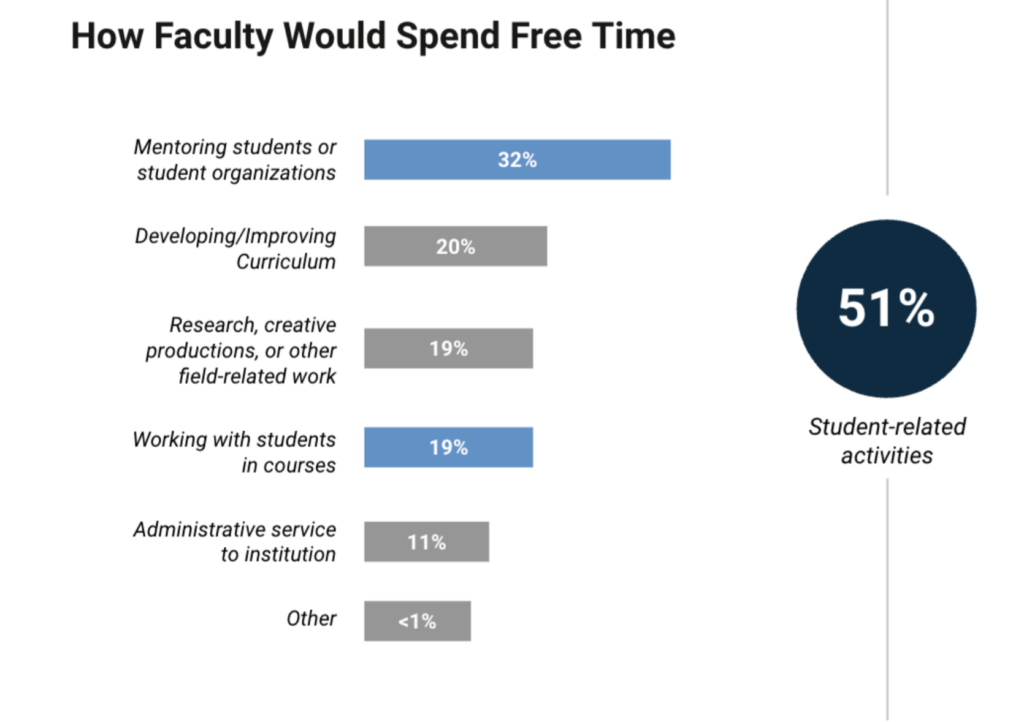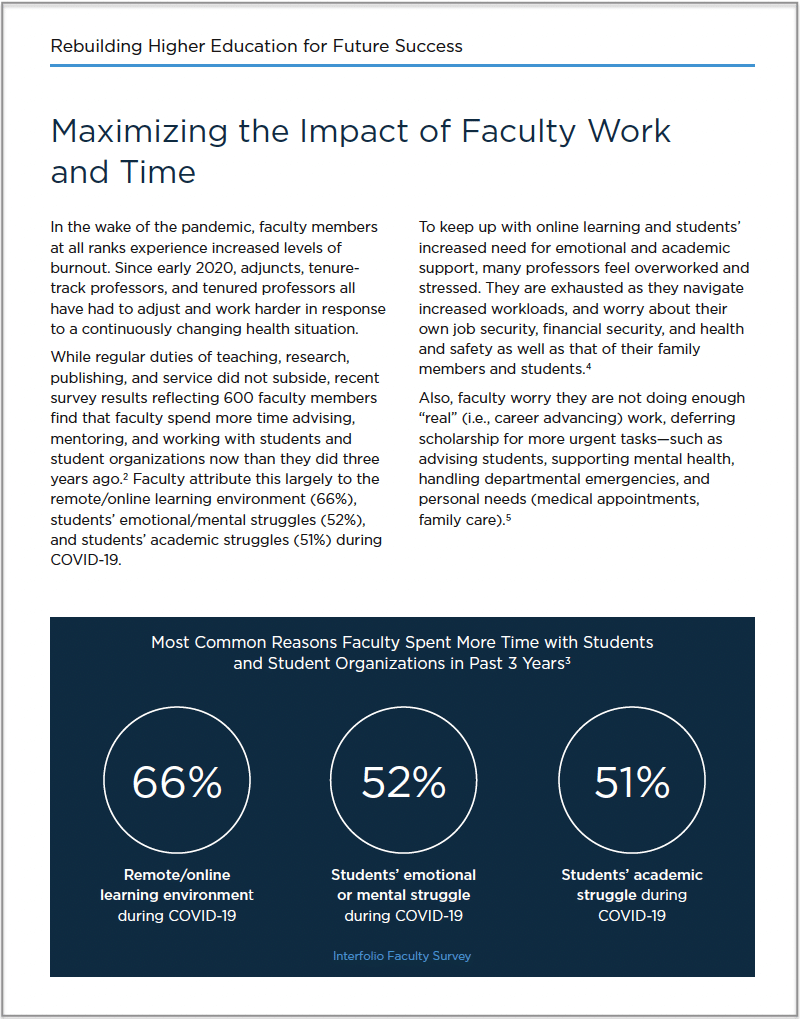A recent survey conducted by Interfolio and Hanover Research of over 600 faculty members from higher education institutions across the country provides a revealing snapshot of faculty’s feelings regarding their workloads, career journeys, and faculty technology. As part of a three-part series looking at the survey results, this blog article details insights into faculty workload.
Over the last three years, the workload on college and university faculty has increased significantly, according to a survey of over 600 faculty members from mostly public institutions across a range of sizes.
If you’re a faculty affairs professional or college administrator, this finding likely isn’t a surprise. Chances are you’ve witnessed firsthand all the additional hard work your faculty have carried out as your institution shifted to online learning and as faculty increased their support of students during the challenges of the pandemic.
But you may not know the details of faculty feelings’ on their new roles – or how you might be able to help faculty navigate their changed circumstances.
Faculty Survey Captures How Faculty Wish Their Roles Would Change
86% of respondents agreed that they wish they had more time to spend on things that are important to them.
In addition, 78% of respondents reported that their workload has increased over the last three years.
Survey respondents attributed the majority of the workload increase to a significant uptick in remote teaching and student support during the pandemic.
Although 86% of the respondents wish they had more time for the things that are important to them, the increased focus on students is not unwelcome to most faculty.
In fact, 51% of respondents agreed that if they had more free time, they would spend it on student-related activities compared to 19% who would devote additional free time to research, creative productions, or other field-related work.

Nor has the increased workload caused the survey respondents to disengage from their work (in contrast to what some faculty observers assert). The majority of our survey respondents (87%) reported being highly engaged in their daily work.
Faculty Affairs Professionals Echo Survey Findings and Share Positive Developments
Although the overwhelming majority of our survey respondents indicated feeling engaged with their work, that doesn’t mean they are happy about the state of affairs, according to several faculty affairs professionals Interfolio interviewed on a recent webinar.
“While we’re not seeing an exodus of faculty, it’s harder to do their jobs, and they’re less satisfied with the jobs that they’re doing,” says Laura Robbins, Associate Dean, Office of Faculty Information at John Hopkins University School of Medicine (JHUSOM).
“At our medical school, COVID has caused us to reassign personnel, such as reassigning surgeons to internal medicine, so they’re not operating; they’re not honing their craft,” adds Robbins. “They’re not leaving the institution — they’re just unhappy.”
Likewise, at New York University (NYU), the continuing disruption of COVID-19 is “causing a lot of anxiety as faculty struggle to do all the things that they came to the institution to do, particularly research,” says Charlton Mcllwain, Vice Provost for Faculty Engagement and Development.
However, at the University of Pennsylvania (Penn), some faculty have welcomed the departure from business as usual.
“In our professional doctorate and master’s programs, there’s a lot of interest in moving those programs online after the faculty experienced online teaching. In fact, we have one master’s program that just abruptly pivoted online,” says Rob Nelson, Executive Director for Academic Technology & Planning at Penn.
Nelson also reports that the survey’s finding of faculty enthusiasm for more student-related activities aligns with his observations about Penn faculty, particularly the increased faculty interest at Penn in mentoring more students.
“There’s been a lot of discussion over the last five years among our faculty about the quality and quantity of mentorship, and a lot of that discussion is related to our diversity and equity initiatives and how we can be more impactful on those students and increase the pipeline of diverse students,” Nelson says.
Similarly, at NYU, as a result of COVID-19, faculty are more focused on learning strategies to promote student success. And at JHUSOM there is increased faculty attention on student’s mental health.
How can faculty affairs help faculty with their workload changes?
While there may be no one-size-fits-all approach to reducing faculty workloads, the faculty affairs professional we spoke to recommend two actions all institutions can take in response to faculty workload changes: encourage faculty to document their activities — and make it easy.
“Tell your faculty to take the time to document what they’ve been doing and how they’re spending their time,” Robbins advises, “because that’s going to be important information in the short term as well as the long term, and they don’t want to rely on their memory for that.”
And just as important is making it easier for faculty to record their activity information.
“It’s critical to have a structure that captures what faculty are doing so that institutions can recognize faculty’s contributions. That’s one of the reasons we adopted the Interfolio Faculty Activity Reporting module — to help us meet that challenge,” says Mcllwain.
White Paper: Rebuilding Higher Education
If you’re interested to learn more about how institutions are navigating these challenges, we recommend our white paper, The Time is Now: Rebuilding Higher Education: How Faculty Affairs Professionals Can Lead their Institutions to Future Success.

